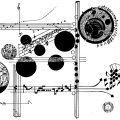The horas money project is a series of time-money bills.
The project aims to develop an alternative currency model, inspired, at first, in brazilian non-hegemonic values. There’s also the necessary reflection about a popular, self-managed banking system, especulated through this banco mutualista dá-dá (‘dá-dá mutualist bank’, being dá-dá a pun mixing Dada – the old avantgardist movement – and dá (3rd person sing. of verb dar: ‘to give’ in portuguese), so dá-dá can also mean “gives-gives”, which is to say: not gives and takes, only gives. An experiment of creating monetary (change) value out of a gift economy.
Here are some of the horas notes already tried:
These were some first sketches. Although the values are written in portuguese (meia-hora = half an hour/ uma hora = one hour), the characters pictured in the bills are two european early 20th century odd figures: dadaist collagiste and artist Hannah Hoch and russian geographer and anarchist Piotr Kropotkin.
The next notes are part of a series depicting brazilian counter-hegemonic figures (that is, not “colonial”) real people and/or symbolic icons:
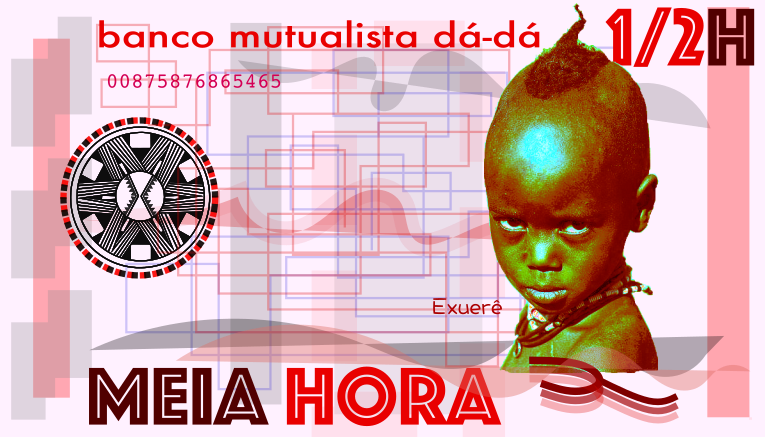
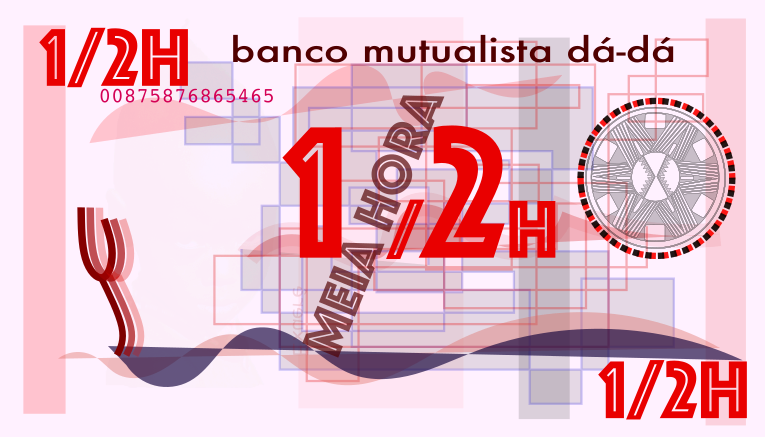
This meia hora bill shows a little guy called Exuerê. Actually it depicts Exu (Èṣù) – the yoruba archetipical divinity (orixá) of many human life aspects such as: movement, indeterminacy and markets – as a kid. Erê is a word for child, also of yoruba origins, used in afro-brazilian religions to refer do children spirits or to children, in general.
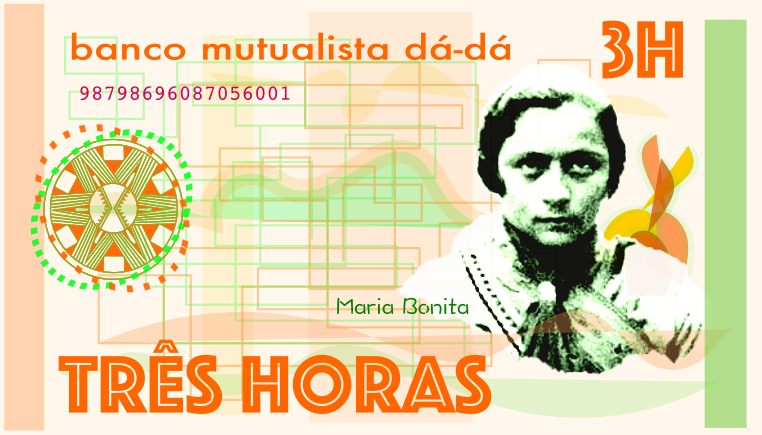
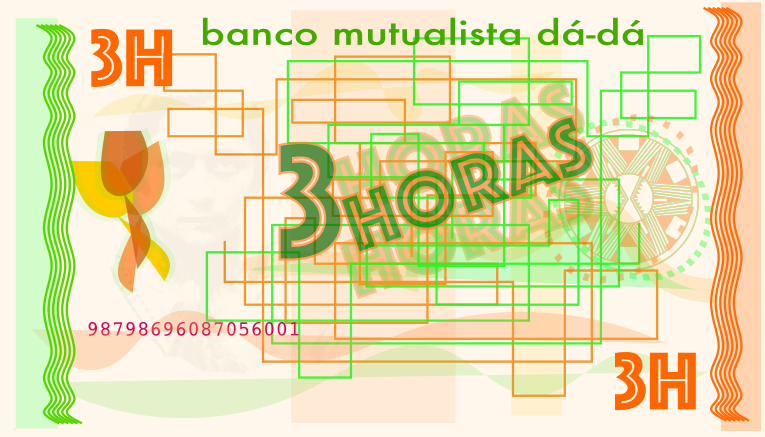
This 3 horas bill depicts Maria Bonita, a legendary cangaceira, wife and fighting partner of Lampião (Virgulino Ferreira) the most famous and one of the last classical cangaceiros. The cangaço was a social phenomenon characterised by the presence of travelling social bandits, that wondered through all over brazilian northeastern region (Nordeste), specially in hot and dry caatinga widespread areas. The cangaceiros were often very violent and spread terror during almost two centuries in the region, although some of them (including Lampião & Maria Bonita) in some accounts are seen as having done social justice to poor peole. The cangaceiros were a main treat and fierce enemies of the police missions sent to chase them, the “volantes“.
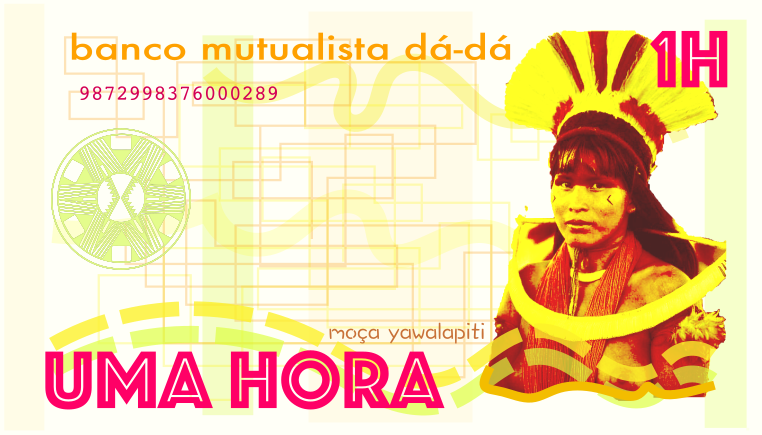
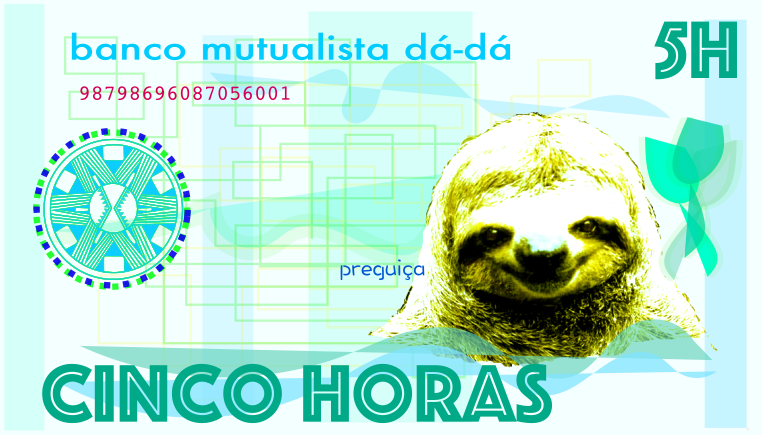
I haven’t yet made the rear view of the 1 hora and 5 horas bills. They depict, in front view, two other symbolic/real characters of brazilian original evironments, existing since before the europeans started to take and explore the land.
1 hora bill shows a yawalapiti young woman (moça yawalapiti). The yawalapiti are one of the still hundreds of original indigenous people living in brazilian federal repuplic territory. This girl is like a metonym of all of them.
5 horas shows the famous sloth (preguiça), a South and Central American mammal. Besides, the word preguiça, in portuguese, also means laziness, and is at the same time the name of the animal, due to its well known slow movements and habits. The most valuable note brings this smiling furry friend to remember us that speed and non-stop-working is not the biggest value in this exchange system. One gain time (hours – horas) from NOT MAKING too much nor being always hushing production per se.
